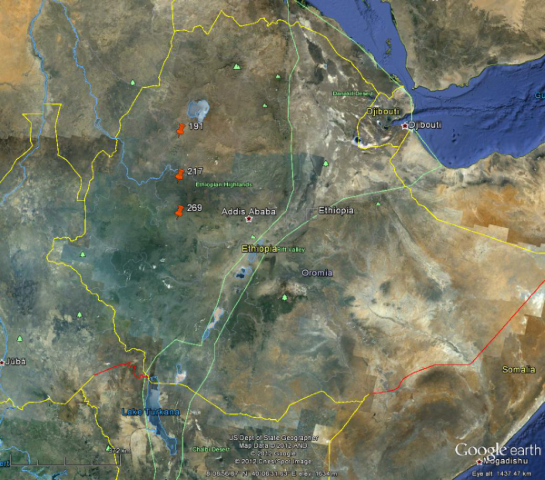2012, November: Workshop on Scenario Selection for Drinking Water from Surface Water and Groundwater
WP B2.1 Environment Workshop 5-9 Nov 2012 at Alterra, Wageningen, The Netherlands
Paulien Adriaanse, WP B2.1
From 5 to 9 November 2012 a procedure has been designed to evaluate risks of pesticides for groundwater and surface water in Ethiopia used as drinking water for men and cattle during a workshop with representatives of the Ethiopian APHRD, EIAR, Water Works Design and Supervision Ethiopia and the Dutch research institute Alterra. First it was clarified which types of surface water and groundwater are to be protected. For the most vulnerable and important protection goals a conceptual model, consisting of a sketch plus description was drafted. For surface water small rivers in the Ethiopian highlands (above 1500 m elevation) as well as temporary stagnant ponds (for cattle watering) were defined. For groundwater wells in alluvial aquifers along small rivers or in volcanic aquifers, both in the Ethiopian highlands were defined, also wells in alluvial aquifers in the Rift Valley margins (up to 2000 m elevation) or in lowlands (below 1500 m elevation) were defined.
Next, a scenario selection procedure was developed. A scenario represents a ‘realistic worst case’ situation for which the risks of normal agricultural use of pesticides are evaluated, before the pesticide is admitted on the market. The term ‘realistic worst case’ situation implies that not the average situation is to be protected, but a more vulnerable situation, covering e.g. 90% or 99% of all possible situations in Ethiopia with respect to the defined protection goals. A scenario is a fixed combination of agro-environmental conditions, such as precipitation, soil, land use management , crops with their cropping calendar and the surface water body or groundwater body to be protected.
Finally, a careful selection of the proposed scenarios was made using spatial and temporal statistics of occurrence of the most important ‘driving factors’ for the pesticide concentration in the selected surface water bodies and groundwater bodies. The driving factors were (i) the number of days with rainfall of more than 20 mm (determining pesticide concentrations in runoff entries into surface water) and (ii) the organic matter content and size of downward water flow (determining pesticide concentrations in water percolating to groundwater).
The entire procedure and its results are to be presented to the Ethiopian Pesticide Advisory Board for approval and future implementation in the registration procedure.

Three candidate scenario locations for the surface water protection goal small rivers in the Ethiopian highlands.



